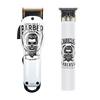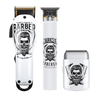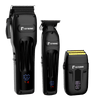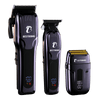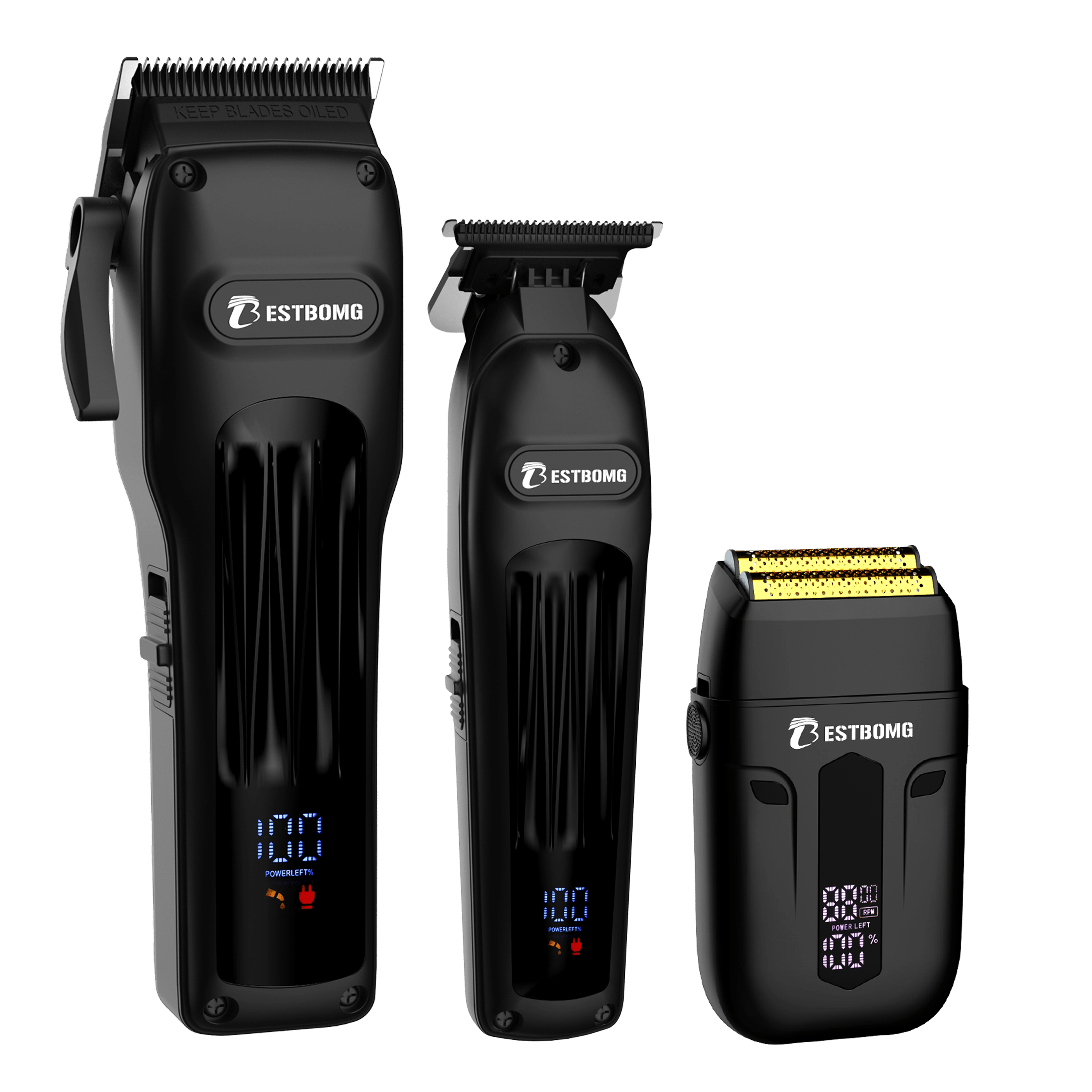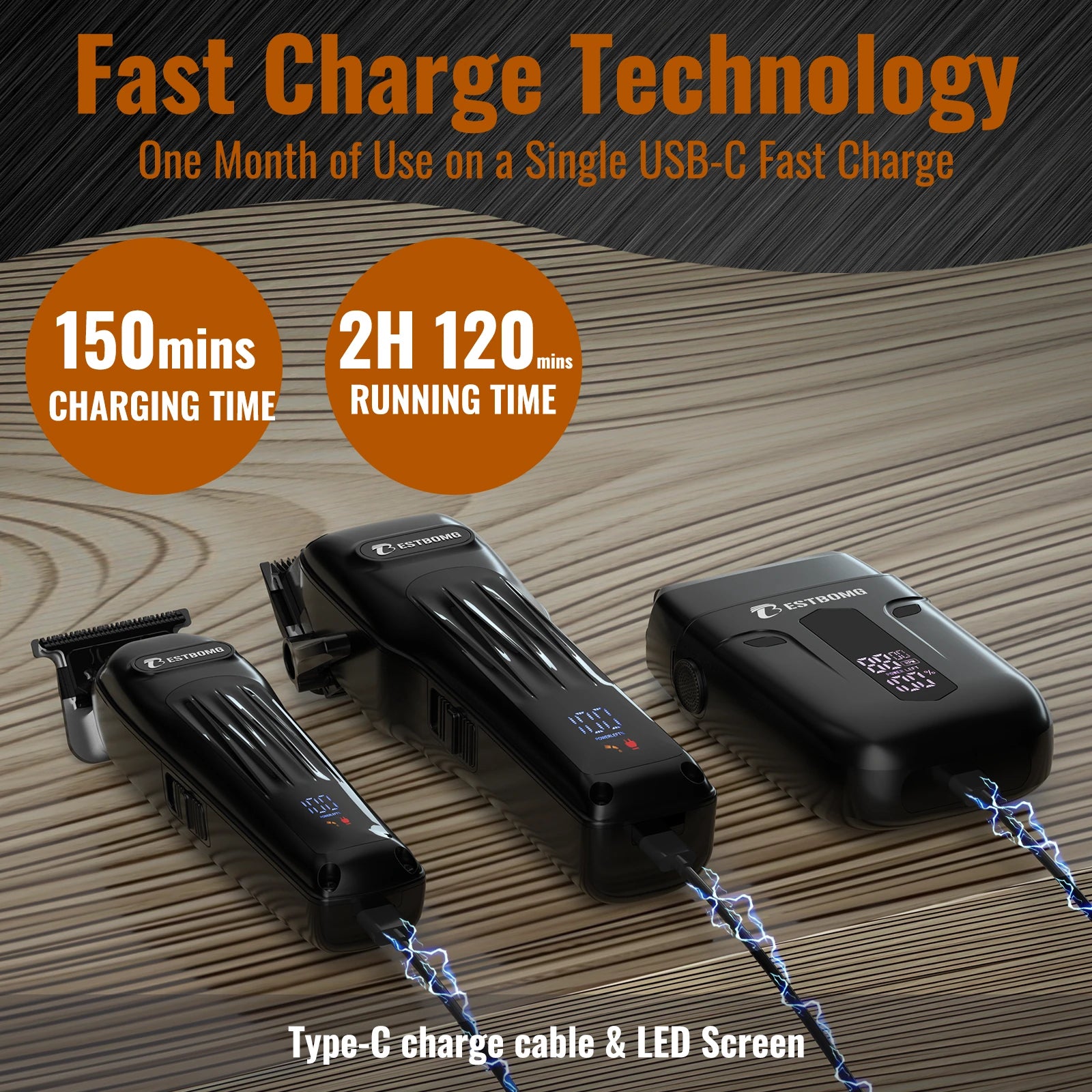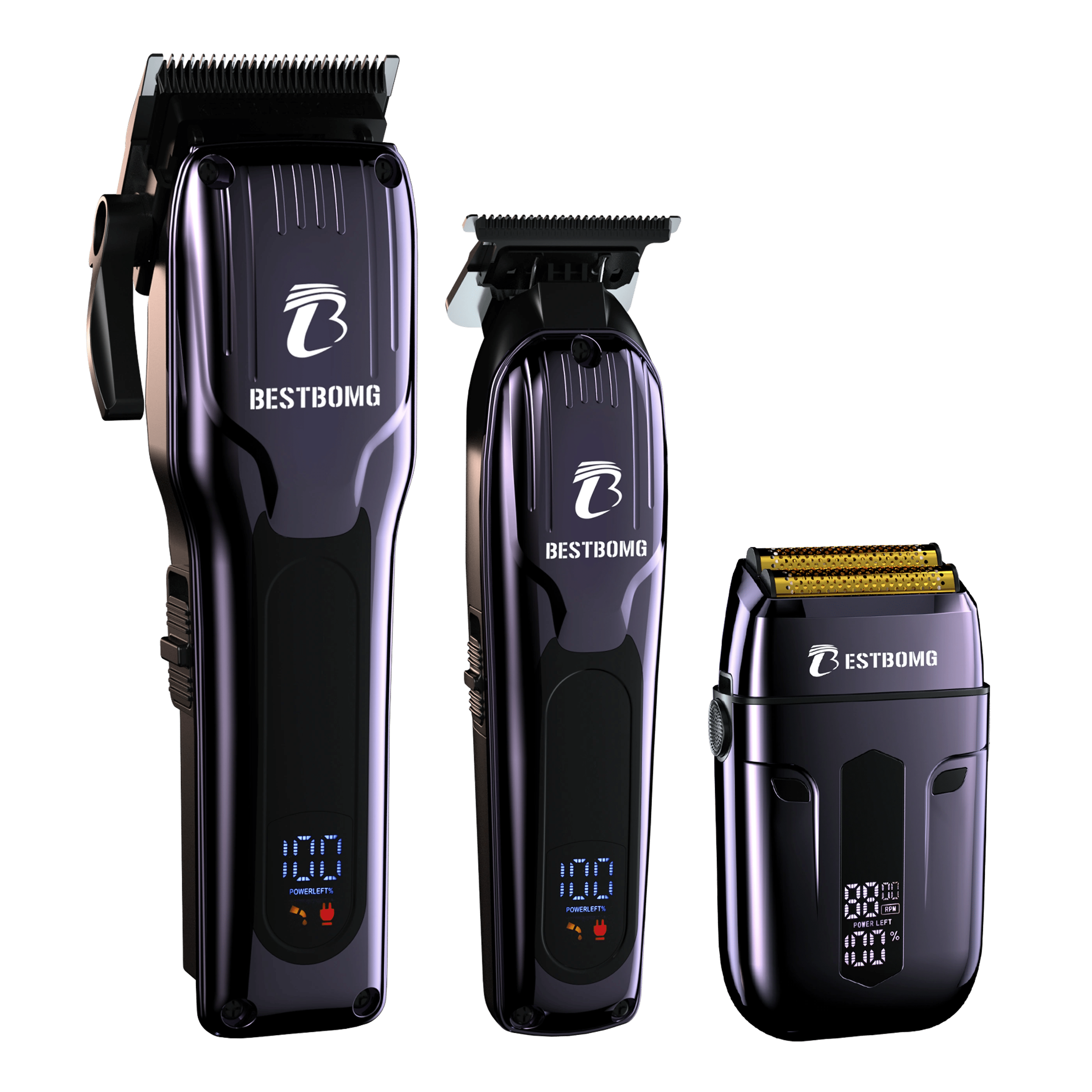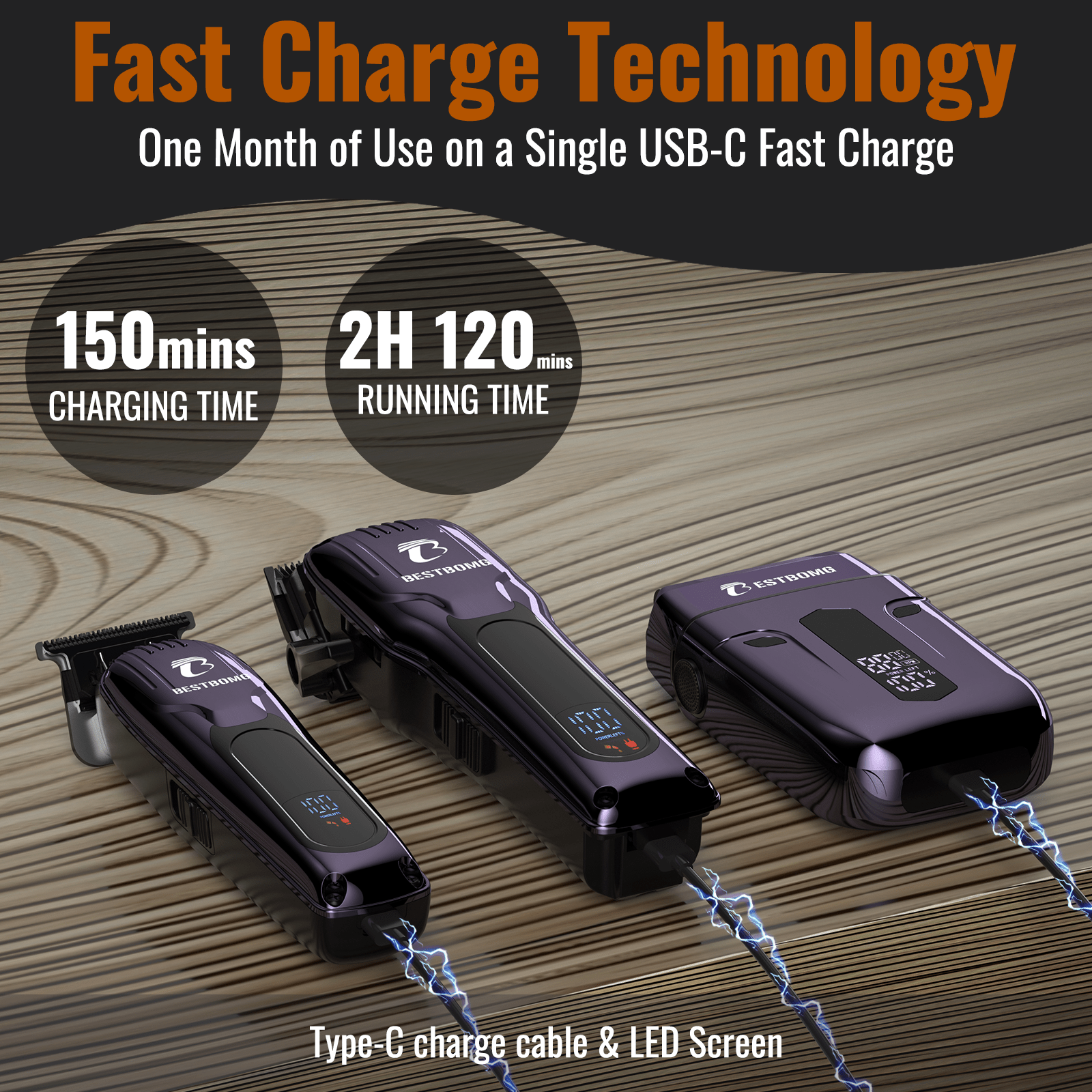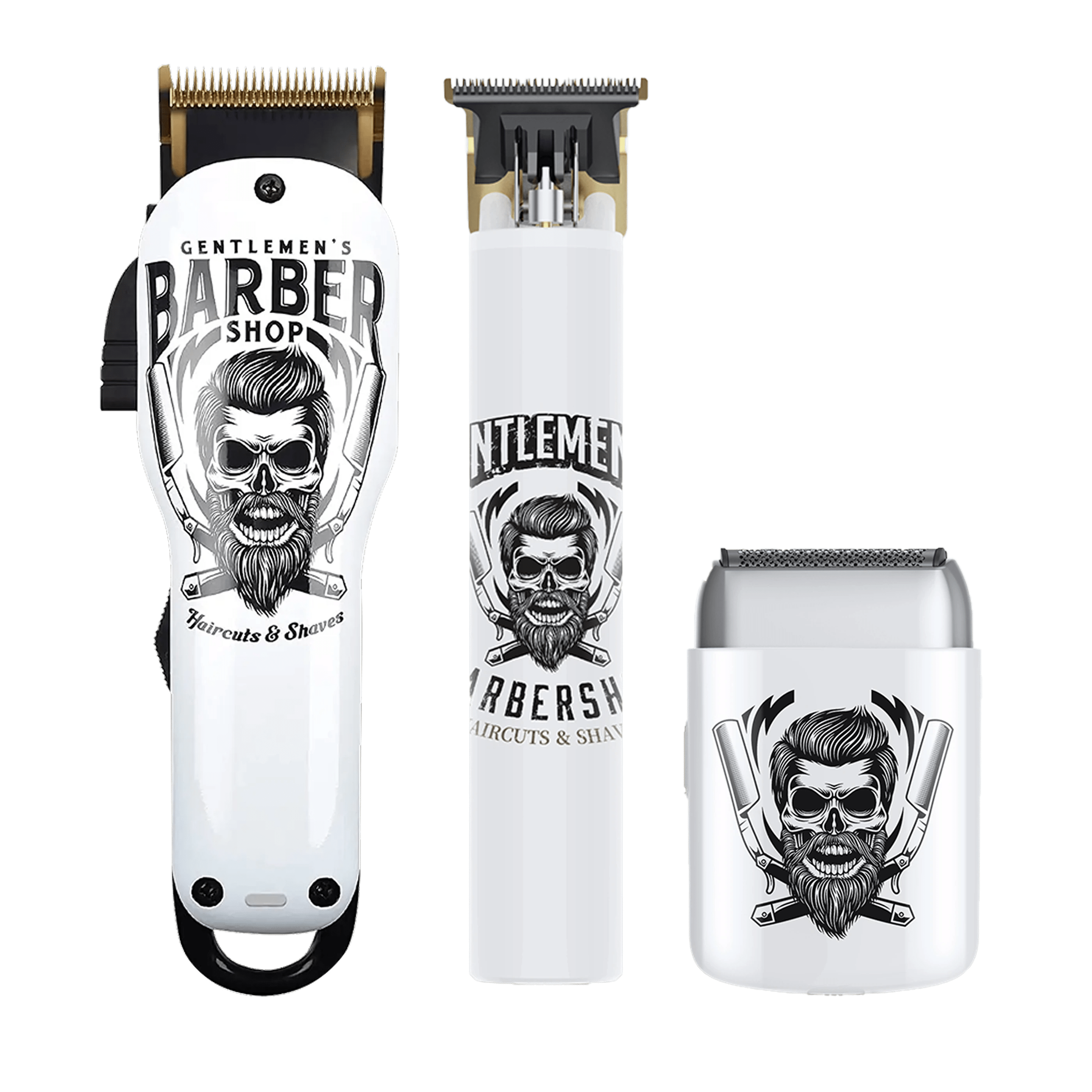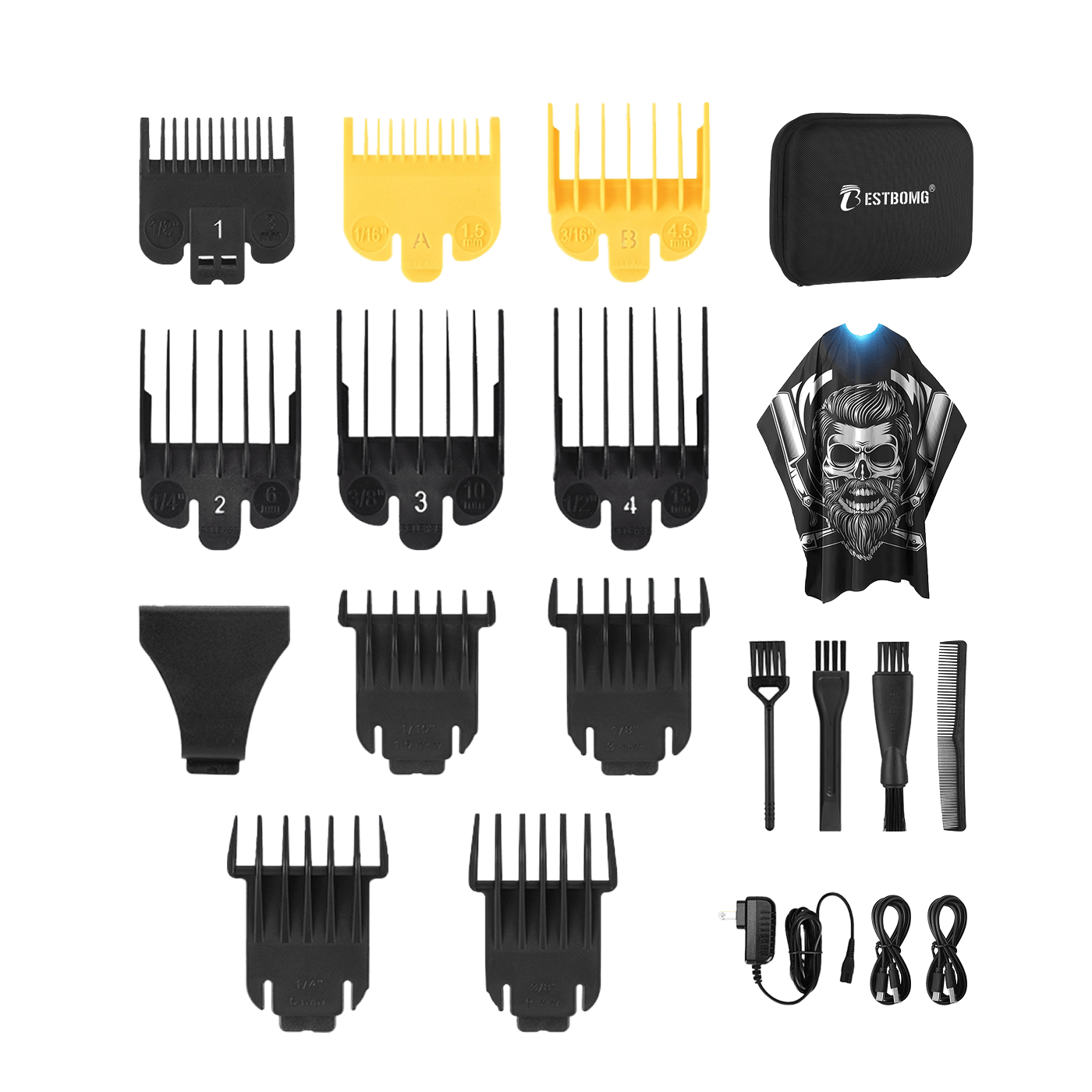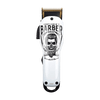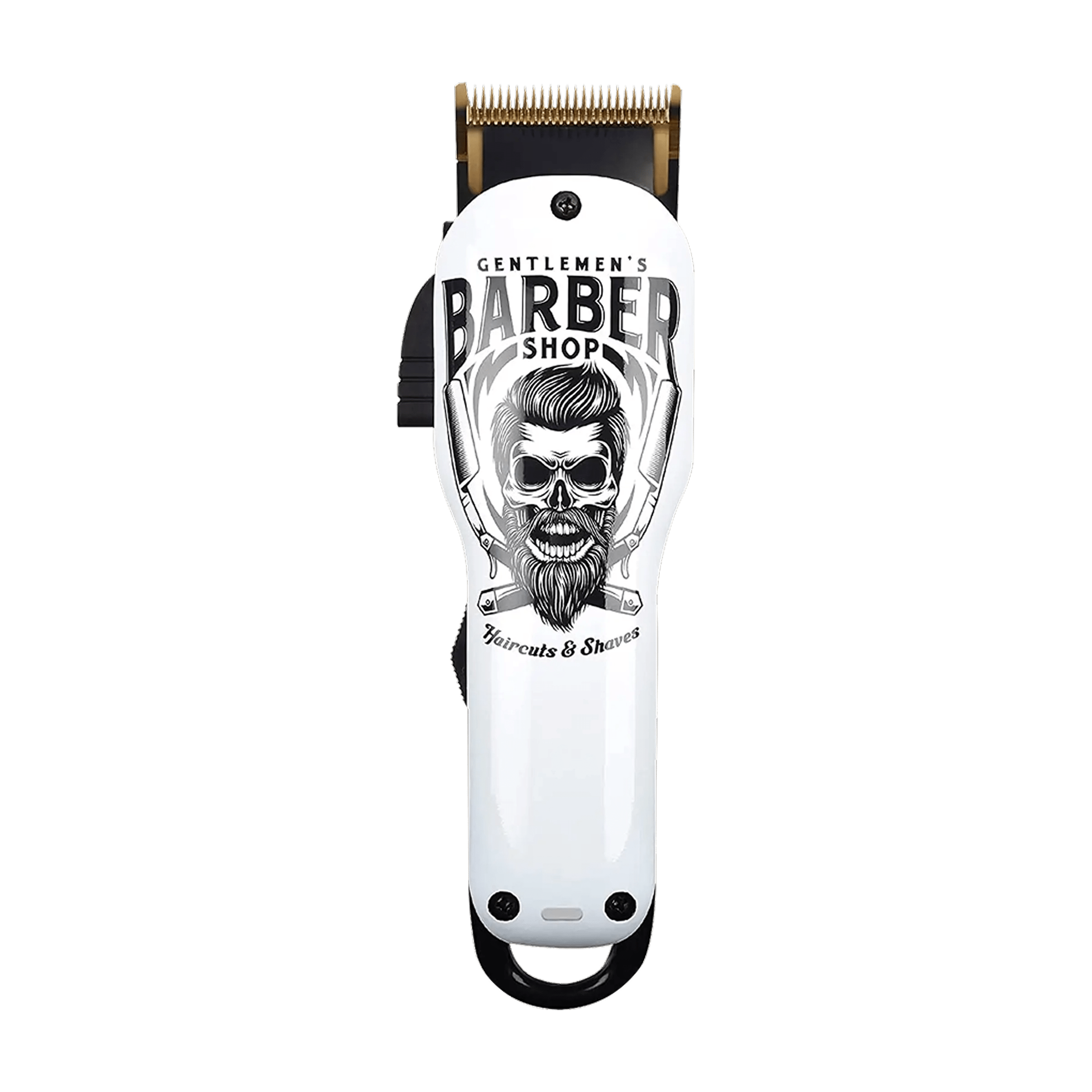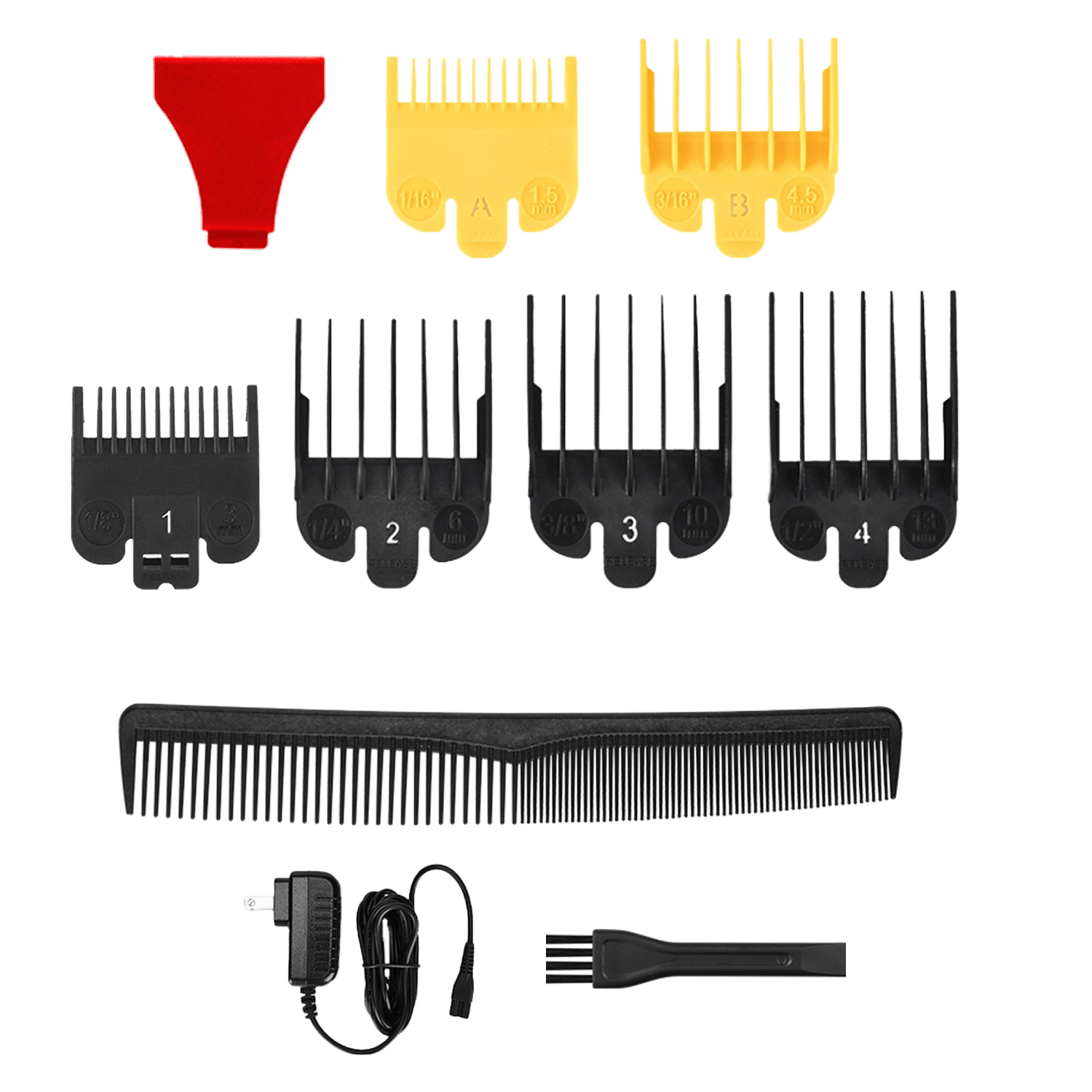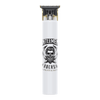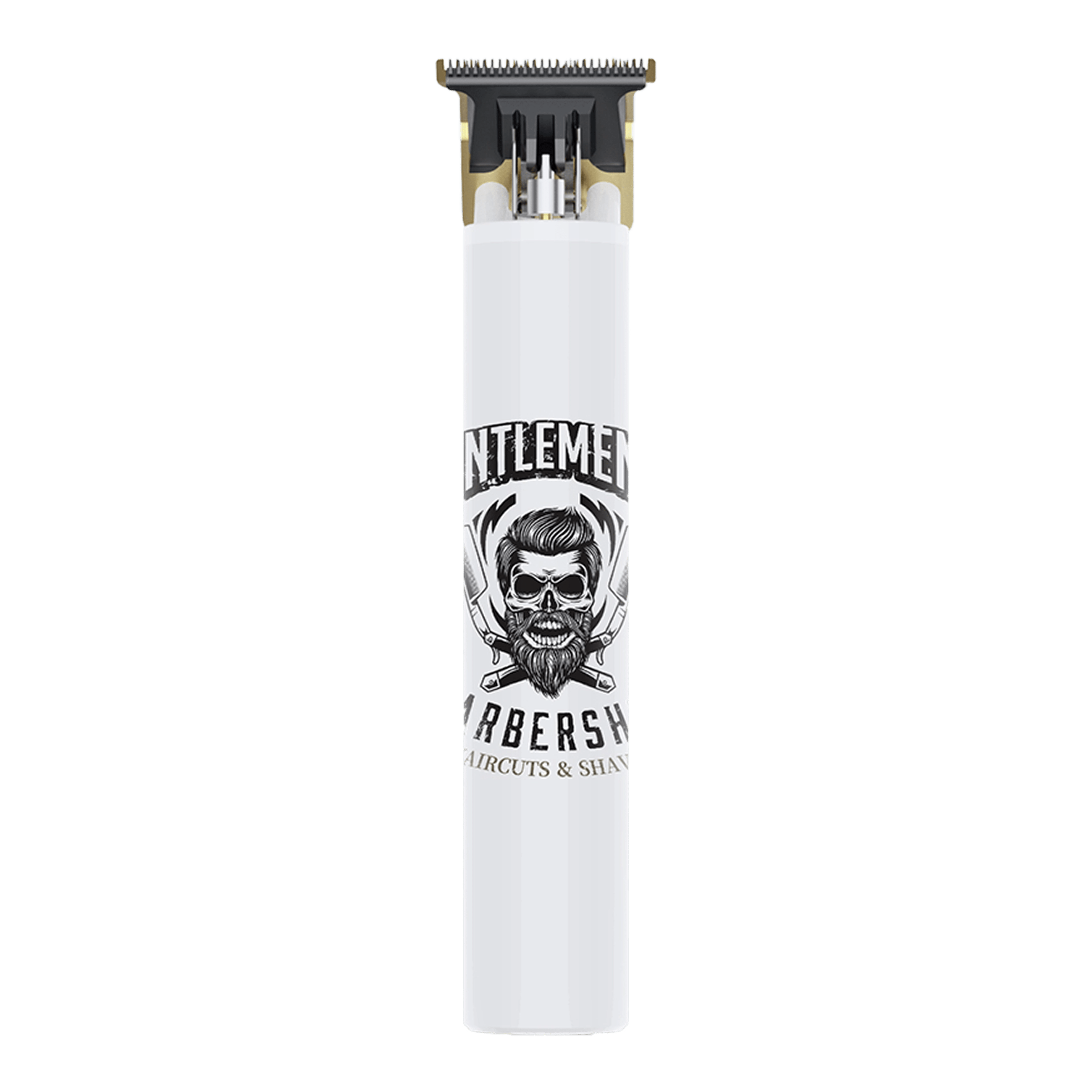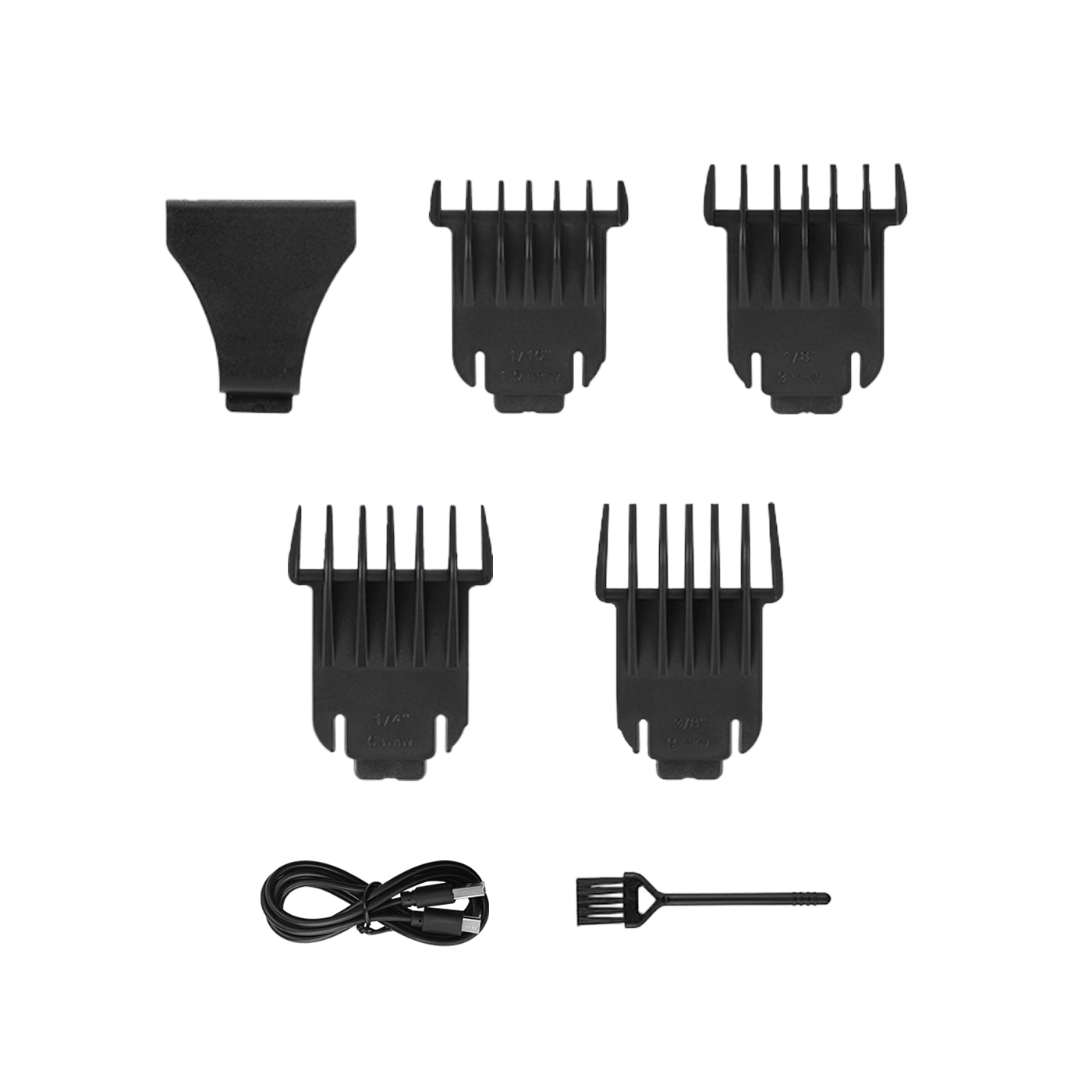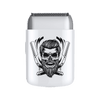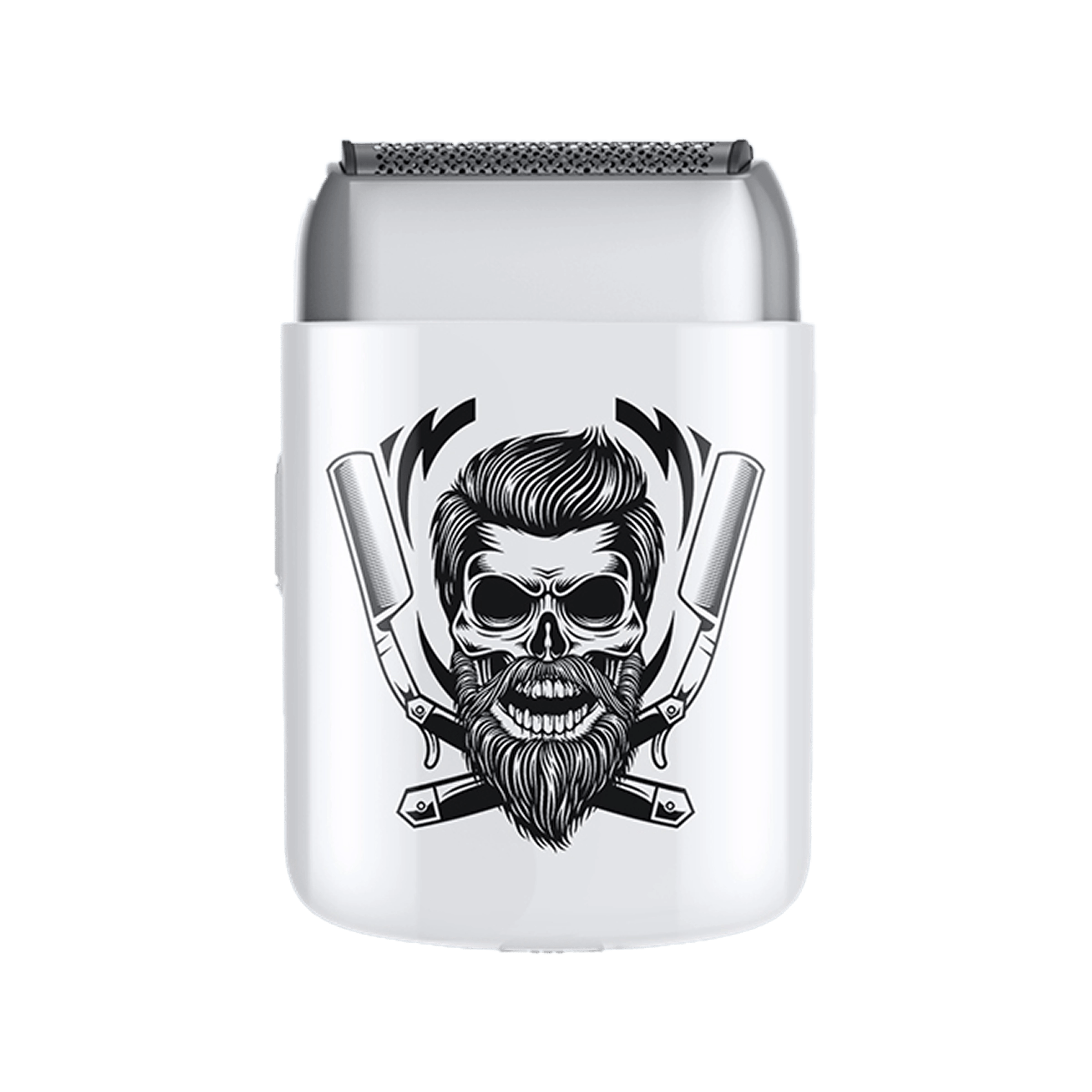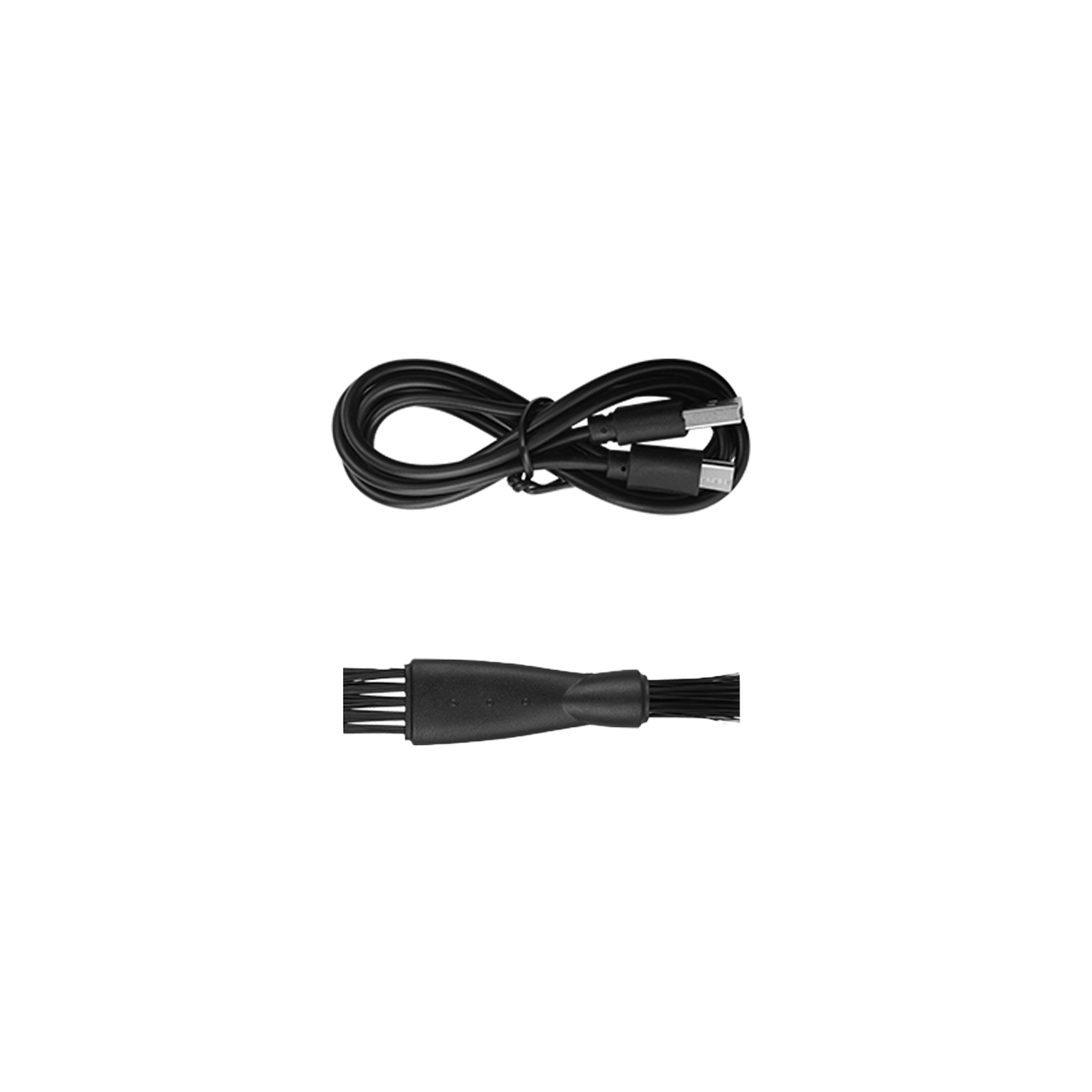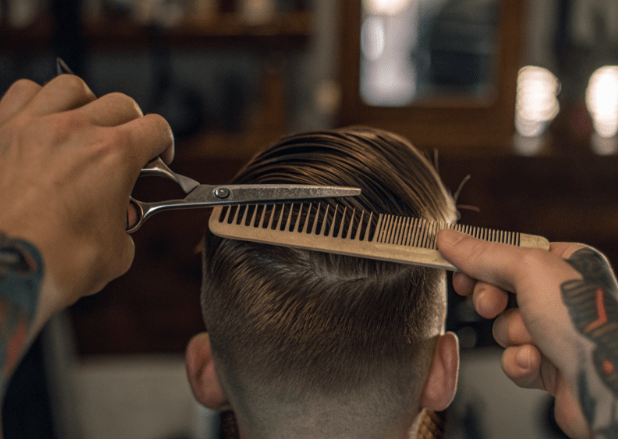Neither clippers nor scissors are inherently better—the choice depends on your desired haircut style. Clippers provide quick, uniform cuts ideal for buzz cuts and fades, while scissors offer versatility and precision for natural-looking styles, layers, and detailed shaping. Most professional barbers use both tools in a single haircut, combining the speed of clippers with the control of scissors for the best results.
The Basic Difference Between Clippers and Scissors
Understanding how each tool works helps you see why they create different results.
Hair clippers:
Electric tool with oscillating blades that cut hair quickly and evenly. The blades move back and forth at high speed, removing hair in uniform sections. Guards control the length, making it easy to create consistent results.
Hair scissors:
Manual cutting tool with two sharp blades that come together to snip hair. Barbers control each cut individually, allowing for precise shaping and customization. Different techniques create different textures and finishes.
The key difference: Clippers are mechanized for speed and consistency. Scissors are manual for control and versatility.
Understanding the evolution of hair cutting tools shows how both have been refined over decades to serve different purposes in modern barbering.

When Clippers Are the Better Choice
Clippers excel in specific situations where speed, uniformity, and sharp lines matter most.
Choose clippers for:
- Uniform, short styles: Perfect for buzz cuts, fades, crew cuts, and other close-cropped looks
- Speed and efficiency: Offer quick, even cuts for busy schedules
- Sharp outlines: Create strong, clean lines for a crisp appearance
- Beginner-friendly cuts: Easier to maneuver for those learning at home
- Bulk hair removal: Remove length quickly before detail work
What clippers do best:
The mechanized cutting action creates straight, sharp edges. This makes the finished style look very precise and clean—perfect if you want that "just left the barbershop" look with hard lines and definition.
The grow-out factor:
Clipper cuts grow out more noticeably. The blunt, straight cut creates a harder edge that becomes obvious as hair grows. You'll likely need a trim every 2-3 weeks to maintain the sharp look.
Quality professional hair clippers for home cuts make it easier to maintain short styles between barbershop visits.
When Scissors Are the Better Choice
Scissors offer advantages that clippers simply can't match for certain styles and techniques.
Choose scissors for:
- Natural flow and texture: Create softer, smoother finishes with more movement
- Detailed cuts: Best for intricate styles, long layers, and precise shaping
- Versatility: Achieve a wide variety of looks across all hair types
- Flexibility: Allow style changes as hair grows out
- Correcting mistakes: Offer more control for fixing errors
- Mid-length and long hair: Essential for styles over 2 inches
What scissors do best:
The manual cutting action creates a softer finish with more natural texture. Hair doesn't have that "freshly cut" blunt edge. Instead, it looks like it's been growing naturally, even right after the cut.
The grow-out advantage:
Scissor cuts grow out more gracefully. The softer edges blend as hair lengthens, so the style maintains its shape longer—typically 4-6 weeks. This makes scissors ideal if you can't visit the barber frequently.
Shape and direction:
Scissors allow barbers to influence how hair flows together. By cutting at different angles and using various techniques, they create shape and movement. Clippers can't do this—they just remove length uniformly.

Clippers vs Scissors: Side-by-Side Comparison
Here's how they stack up across key factors.
Speed:
- Clippers: Very fast, ideal for high-volume barbershops
- Scissors: Slower, requires deliberate movements
Precision:
- Clippers: Excellent for uniform lengths, less control for details
- Scissors: Superior precision for texturizing and layering
Versatility:
- Clippers: Best for short hair (under 2 inches)
- Scissors: Works on all lengths and styles
Skill level:
- Clippers: Easier for beginners to get decent results
- Scissors: Requires more training and experience
Finish:
- Clippers: Sharp, clean, crisp edges
- Scissors: Soft, natural, flowing look
Grow-out:
- Clippers: Noticeable after 2-3 weeks
- Scissors: Gradual, lasts 4-6 weeks
Hair types:
- Clippers: Excellent for thick, coarse hair
- Scissors: Suitable for all hair types, essential for curly textures
According to grooming experts who explain professional barbering techniques, the most skilled barbers know when to use each tool for optimal results.
Why Professional Barbers Use Both
Most haircuts combine clippers and scissors. This approach uses the strengths of each tool while minimizing their weaknesses.
Common combination techniques:
- Clippers for the base: Use clippers with guards to remove bulk and establish the main shape quickly
- Scissors for detail: Switch to scissors for texturizing, blending, and refining the top
- Clippers for edges: Return to clippers (no guard) for sharp necklines and sideburns
- Scissors for finishing: Final touch-ups and softening hard clipper lines
Example: Modern fade haircut:
- Clippers create the fade on sides and back (fast, uniform)
- Scissors cut and texture the top (natural movement)
- Clippers clean up the outline (sharp edges)
- Scissors blend the transition (soft integration)
Why this works:
You get the efficiency of clippers where it matters (removing bulk, creating fades) combined with the precision of scissors where it counts (shaping, texturing, blending).
A complete hair cutting kit with clippers and scissors provides everything needed for professional results at home.
Can You Use Large Clipper Guards Instead of Scissors?
No, not really—and here's why. This is a common question, especially for DIY haircuts.
The tension problem:
Large guards (like #10 or #12) have teeth spaced far apart. This doesn't hold hair firmly enough to cut evenly. The hair slides through the guard instead of being held in place for cutting.
What actually happens:
You might remove some length, but the result will be uneven and choppy. Even if you manage to cut it, you'll need to go through with scissors anyway to fix the inconsistency.
The shape problem:
Guards cut hair to a uniform length all over. This doesn't create shape or direction—it just makes all the hair the same length. Your hair needs different lengths in different areas to look good and flow naturally.
Professional opinion:
Most barbers don't use guards larger than #4 or #5 for this exact reason. Beyond that, scissors provide much better control and results.

Choosing the Right Tool for Your Hair Type
Your hair texture influences which tool works best.
For fine, straight hair:
Scissors work better for creating shape and preventing that "too short" look. Fine hair shows every cut line, so the softer scissor finish looks more natural.
For thick, coarse hair:
Clippers handle dense hair more efficiently. They power through thick hair without getting stuck. Scissors can work but take much longer.
For curly or textured hair:
Scissors are usually essential. Curly hair needs shape and direction to look good. Clippers can leave curly hair looking boxy and unnatural. Skilled barbers use specialized scissor techniques for curly textures.
For very short styles (under 1 inch):
Clippers are the only practical choice. Scissors can't efficiently cut hair that short all over.
For mid-length to long styles (over 2 inches):
Scissors are necessary. Clippers lose effectiveness at these lengths, and you need scissors to create layers, texture, and movement.
Learning about proper hair care for different textures helps you maintain your style between cuts.
What Style Do You Want? Let That Decide
Your desired look should guide the tool choice. Here's how to think about it.
Want sharp, clean, precise:
- Buzz cut
- Skin fade
- Crew cut
- Military-style cut
- High and tight
Tool needed: Primarily clippers, maybe scissors for top detail
Want soft, natural, flowing:
- Textured crop
- Layered styles
- Side-swept looks
- Pompadour (with volume)
- Any mid-length style
Tool needed: Primarily scissors, maybe clippers for bulk removal
Want the best of both:
- Modern fade with textured top
- Undercut with styled top
- Tapered sides with longer top
- Most contemporary men's styles
Tool needed: Both clippers and scissors (most common approach)
DIY Haircuts: Which Tool Should You Use at Home?
For home haircuts, clippers are usually easier to learn and use safely.
Why clippers work for beginners:
- Guards prevent cutting too short
- Less skill needed for decent results
- Faster, less tiring to use
- Harder to make major mistakes
- Work well for maintaining existing styles
When you might need scissors at home:
- You have longer hair (over 2 inches)
- You want to trim your own bangs
- You're adding texture to the top
- You're maintaining a layered style
- You need to fix a mistake
Reality check:
Most people doing home haircuts stick to simple clipper styles for good reason. Scissor work requires significant practice to do well. There's nothing wrong with using clippers for maintenance and seeing a professional barber every few months for scissor work.
Quality tools from Bestbomg's home grooming equipment collection make DIY haircuts safer and more effective.
Common Misconceptions About Clippers vs Scissors
Let's clear up some confusion.
Myth: Scissors are always better quality:
False. Both tools can be high or low quality. Professional clippers can cost $200+, just like premium scissors. Quality matters more than the tool type.
Myth: Clippers damage hair:
False. Properly maintained, sharp clippers don't damage hair. Dull blades pull and tug (which can damage), but so do dull scissors.
Myth: Scissors take longer because they're better:
Not quite. Scissors take longer because they're manual and allow for more detailed work. "Better" depends on what style you want.
Myth: You can replace scissors with large clipper guards:
False. Large guards (over #4-5) don't cut evenly or create shape. Scissors are necessary for longer lengths.
Myth: Clippers are only for short hair:
Mostly true. While clippers can be used on longer hair for certain techniques, scissors are far more effective for lengths over 2 inches.
Frequently Asked Questions
Which is better for hair: clippers or scissors?
Neither is universally better—it depends on your desired style. Clippers excel at quick, uniform cuts for buzz cuts and fades with sharp lines. Scissors provide precision for natural-looking styles with texture and movement. Most professional haircuts use both tools, combining clipper efficiency with scissor control for optimal results.
Do scissors or clippers give a closer cut?
Clippers give a closer, tighter cut on short hair. They can cut as short as 1/16 inch (with no guard) in a smooth, even way. Scissors can't practically cut that short all over. However, for longer styles, "closeness" isn't the goal—shape and texture matter more, which scissors provide better.
Why do barbers use scissors instead of clippers on top?
Scissors create shape, texture, and natural movement that clippers can't achieve. Large clipper guards don't hold hair firmly enough for even cutting, and they create uniform length without shape. Scissors allow barbers to cut at different angles, creating dimension and ensuring hair flows naturally rather than looking like a grown-out buzz cut.
Can I cut my own hair with just clippers?
Yes, if you want a simple, short, uniform style. Clippers with guards work well for buzz cuts, crew cuts, and maintenance of short styles. For anything longer than 2 inches, involving layers, or requiring texture, you'll need scissors. Many people successfully maintain short styles at home with just clippers between professional cuts.
Do scissor cuts last longer than clipper cuts?
Yes, scissor cuts typically last 4-6 weeks before needing a trim, while clipper cuts need maintenance every 2-3 weeks. Scissors create softer edges that blend as hair grows, maintaining shape longer. Clippers create blunt, straight edges that become obvious quickly as hair lengthens, requiring more frequent touch-ups.
Are clippers easier to use than scissors for beginners?
Yes, clippers are significantly easier for beginners. The guards prevent cutting too short, and you don't need to master complex hand movements. You can achieve decent results with basic technique. Scissors require substantial practice to control properly, judge lengths accurately, and create even results. Start with clippers if you're learning at home.
Get professional results at home with the right tools. Explore quality clippers, scissors, and complete grooming kits at Bestbomg's barbering tools and equipment store for every style and skill level.
Read more
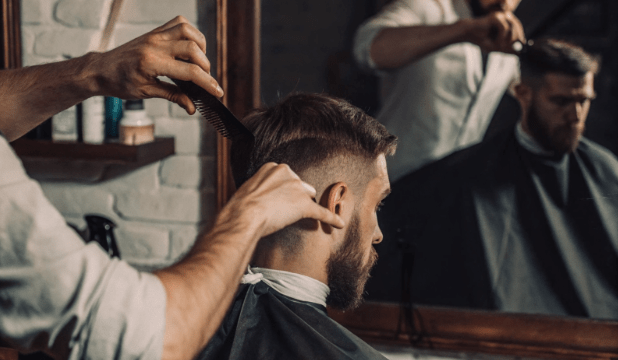
Why Are My Clippers Pulling Hair? 7 Common Causes and How to Fix Them
Your clippers should glide smoothly through hair without tugging or snagging. If they're pulling instead of cutting, it's frustrating and painful. The good news? This problem is usually easy to fix...
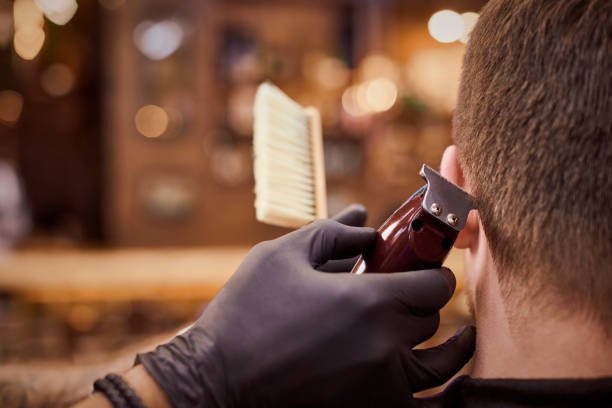
What Hair Clippers Do Barbers Use? Professional Recommendations
Professional barbers primarily use Wahl, Andis, and Oster clippers for their reliability and cutting power. Popular models include Wahl Magic Clip and Senior, Andis Master, and Oster Fast Feed. Mo...
